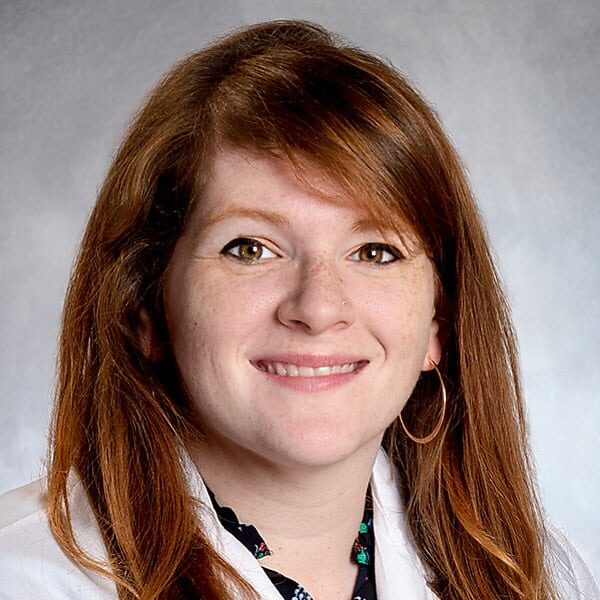
As a 2024 recipient of the DF Health Care Policy Career Development Award, we asked her the importance of her Dermatology Foundation funding on her work and her hopes for the future of the DF.
Advocating research to stay out of the ER and heal at home
DF: First and foremost, congratulations on your Career Development award from the Dermatology Foundation.
Dr. Charrow: Thank you. I’m so excited and thankful for this award!
DF: Please tell us about the project that got the funding.
Dr. Charrow: I direct the Hidradenitis Suppurativa (HS) Clinic at the Brigham and Women’s Hospital—I know, that’s quite a mouthful. I describe it as the most common inflammatory skin disease no one’s ever heard of. It’s almost as common as psoriasis, but unlike psoriasis, it doesn’t have quite as many treatments yet available for it.
It causes abscesses, nodules, and tunnels in very intimate areas of the body, like the armpits, and the groin, and it’s characterized by flare ups and pain that then needs to be treated urgently.
DF: That sounds difficult.
Dr. Charrow: Yes, fortunately, a little under ten years ago, the first FDA-approved treatment for HS became available. There’s also been one more medication that’s been approved, but both medications only work about half the time and reduce the disease by about 50%.
Our project is focused on the emergent and urgent aspect of the disease—the fact that patients often must utilize the emergency room because they develop a spot very suddenly that causes them great pain and difficulty with mobility. And though ERs and Urgent Care facilities are excellent places to get care, they’re not very convenient for patients and they don’t have specialists present.
DF: How does your research award address this?
Dr. Charrow: One thing we’re trying to do over the long term, is figure out ways that we can get patients’ urgent access to care without having to utilize an emergency room or urgent access.
Specifically, we’re most interested in the barriers for patients to receiving care in the clinic, and ways that we can help patients get care in the clinic, especially those who are already connected to a dermatologist.
So we’re focusing on people who have a dermatologist but are not able to access care as easily. That means we’re doing three things in our study.
- The first thing we’re doing is trying to characterize the differences between patients who go to the emergency room and to a clinic for flares. What are some of the risk factors that may be present that make people more likely to go to the ER.
- Then we will do qualitative interviews with patients to figure out the reasons they go to one or the other for a flare.
- The last part of our study is implementation, and my hope over the next year or two is to start to characterize all the patients who call in for flares to our clinic and determine if there are more forward-thinking plans that we could develop to enable them to utilize the clinic or other resources—including things we could do within the ER that might enable patients to seek out care outside the emergency room or apps or technology we can utilize to prevent people from having to go to the ER.
DF: What kind of impact do you hope it could have?
Dr. Charrow: The goal is that we’d be able to find a patient-centered method of treating patients at home for their flares, so they don’t have to utilize the emergency room, urgent care or even our clinic for flaring.
DF: How does this DF funding allow you to do that?
Dr. Charrow: The first thing it allows me is time to think more critically about what Hidradenitis Suppurativa patients need. The more time we have to think, the better we’re able to address problems at a 10,000-foot level as opposed to a two-inch level.
For the first five years of my practice, I’ve been primarily addressing problems as they come up, but this award will enable more time to think about how we can help patients and what kind of methods we might want to use that are outside of dermatology. We can engage other specialties and explore what other people have done. There are lots of flaring conditions that are not in dermatology that require urgent and emergent care. In dermatology luckily there aren’t very many emergencies, but that also means that we haven’t had as much space to engage and think through the diseases in which we do have emergent and urgent flaring and how we can give patients the best care possible in a timely fashion within the constraints of our system.
DF: I love your metaphor of the 10,000-foot point of view as opposed to the two-inch view, thank you! How did you become interested in dermatology?
Dr. Charrow: I came to dermatology very late, honestly, and in fact, I’m only in it now as a specialty because of a prior DF award recipient Misha Rosenbach, and other incredible mentors, including Ruth Ann Vleugels, Alexa Kimball, Arash Mostaghimi, Joslyn Kirby, Haley Naik, Eileen Chang, Tina Porter, and Megan Noe.
DF: It sounds like you have a powerful and supportive community around you.
Dr. Charrow: Yes! So, when I was a medical student, I decided to expand and apply to a combined internal medicine dermatology residency, which I did after doing a rotation and finding it so fascinating.
I ended up having a continuity clinic every single week with two people, one of whom was Ruth Ann Vleugels who has a connective tissue disease clinic at the Brigham and is also a recipient of a Dermatology Foundation CDA, and Alexa Kimball, who is a Hidradenitis Suppurativa specialist at Beth Israel, and the head of their physician’s organization and they both are extremely impressive women. Both women are among a very small cohort of full female full professors at Harvard Medical School.
Those two clinics were extremely motivating for me in terms of thinking through what I wanted from a clinic, and what kind of disease I wanted to specialize in.
What I found really interesting about Hidradenitis Suppurativa was that there seemed like there was even more of a gap in terms of treatment, and I became interested in it for that reason. I also quite like surgery and there’s a surgical component to treating HS.
I think I would have been happy in almost any part of medicine or dermatology, but I believe I ended up here because I’ve always been most interested in the parts of medicine in which we seem to understand the least and we have the most room to grow.
DF: I love that insight. Do you think you have a deeper understanding of your patients as a woman, and as a mother?
Dr. Charrow: I think what has defined being a woman for me – but may not be the case for everybody – is having painful or uncomfortable things that are unexpected happen to your body that you have limited or no control over: pregnancy, birth, menstruation, menopause and more. All of that is often out of your control.
And I think women, whether they have children or not, whether they are cis or transgendered, women tend to have that experience almost universally, and that changes our relationship to our body and by extension to chronic illnesses.
DF: I get that. And it could definitely give you more of an urgency to solve things.
Dr. Charrow: Yes, and again, this is just my experience.
DF: I appreciate you sharing that. As we celebrate the Dermatology Foundation’s 60th anniversary, I would love to hear your thoughts on what you think is the most significant impact the Dermatology Foundation has made in the last 60 years.
Dr. Charrow: Through supporting early career physician-scientists, physician clinicians, and clinical researchers, the Dermatology Foundation has done so much to help build a bullpen, a roster of academically minded dermatologists, who are invested in research and moving the field forward.
DF: That echoes back to the community of people you mentioned having around you.
Dr. Charrow: Absolutely.
DF: One more question: Where would you like to see the Dermatology Foundation evolve and expand in the next 60 years?
Dr. Charrow: They have such a great focus and support of basic science, and my hope would be that they would support more partnerships between a clinician like me and a basic scientist and have team-oriented grants supporting a project that involves a basic scientist or a translational scientist and a clinician.
I think that would be wonderful, as well as community engagement or projects around educational community engagement.
DF: Those are wonderful thoughts, thank you so much, Dr. Charrow.
Dr. Charrow: Thank you so much for the opportunity to share my thoughts.


